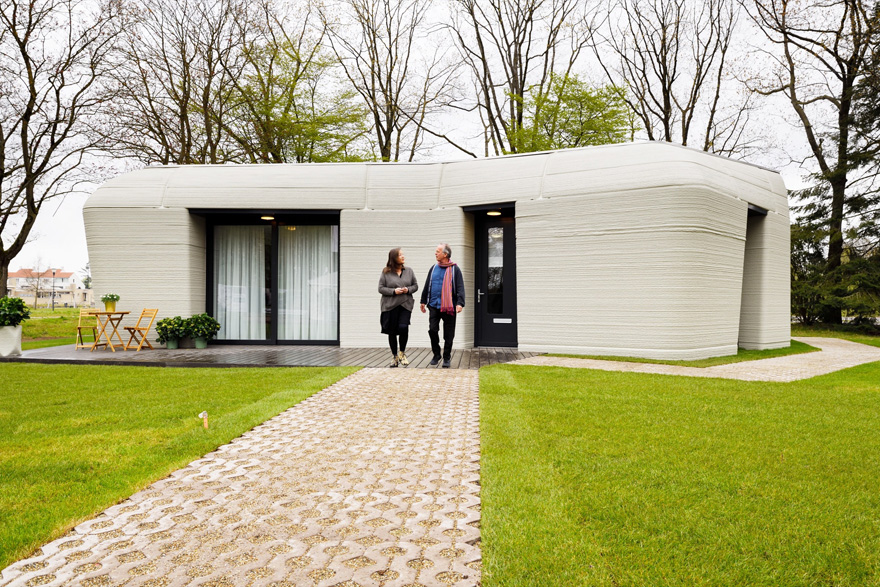Leapfrog 3d printing
Leapfrog 3D Printers | Professional 3D Printers and Printing Materials
Oops...
Slider with alias homepage-refurbished-bolt-pro not found.
Discover our Bolt Pro 3D PrinterTestimonials
Video Testimonial: FUJITSU aiming high with the Bolt Pro
‘We chose Leapfrog instead of other brands for two reasons. Firstly, because it has an open environment that allowed us to use a variety of materials rather than limiting to just one. Secondly, because it has certain features that we didn’t find in other machines of its range.’
-
We use the Bolt Pro to create designs that were made with traditional technology like milling.
-
Creating
tooling for the production line. -
3D printing requires fewer parts, the cost is less and its much faster, additionally it has the
flexibility to test multiple concepts without increasing costs to the production lines, which is important. -
The
return on investment has been very fast, in about 6 months. -
We have noticed that our
flexibility and our speed to try new concepts has increased exponentially.
Luis De La Jara, Coordinator Mechanical Designers
Automotive Engineering Department Fujistu Spain
SEE VIDEO TESTIMONIAL
KLM and Leapfrog: a success story
-
We chose the Bolt Pro because of its rigidity and the option to print two parts simultaneously with the two heads. Another advantage is the ability to print
high-temperature materials. We have two Bolt Pro printers in our Engineering & Maintenance Department: -
We also print prototypes of small aircraft cabin parts. These prototypes are actually tested on board by cabin crew. Final designs are mass produced by injection molding from certified materials.
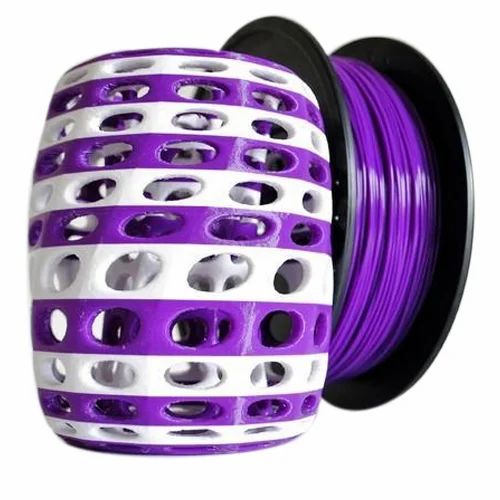
-
The
dimensional accuracy of the prints is very good.
‘
I certainly recommend the Bolt Pro because of its rigidity, its large print bed and the two print heads which double the print speed once more similar parts are needed. I think the Leapfrog Bolt Pro is very suitable for engineering in prototyping and it can even produce a small series of plastic parts’.
Maarten Ottevanger, Process Engineer
KLM Engineering & Maintenance
What is Volkswagen using the Leapfrog 3D Printers for?
-
The Bolt was analyzed as the best machine for printing
flexible materials due to the direct drive system -
Relatively
large build volume, especially considering size vs. cost -
2 Independent Dual Extruder system
IDEX since we assemble cars for both left and right driving sides, so this helps a lot for building mirror parts - Reliable – although we had our startup issues with this unit, support was good and we managed to correct issues.
 We believe the Leapfrog Bolt Pro is a very reliable machine for the way we use this equipment.
We believe the Leapfrog Bolt Pro is a very reliable machine for the way we use this equipment.
Summarizing, our engineers using the Leapfrog 3D printers are more than thrilled about the results and potential the Leapfrog printers have; your 3D printers are better from numerous points of view (printing materials, IDEX, build volume etc). At the same time, we also see room for improvements and are happy to share feedback for further development ideas.
5 Reasons Why Rolls Royce Chose Leapfrog’s 3D Printers
Rolls Royce was in the market for a new 3D printing solution so as to be able to expand their internal rapid prototyping capabilities. They looked at various machines We looked at a range of machines from cheap Chinese hobbyist machines all the way up to eye-watering expensive liquid polymer based printers but our deciding criteria were:
- Dual extrusion – soluble support material is very important for the types of models we will be printing, often involving large overhangs and intricate internal features.

- Full enclosure – Two reasons for this, first being to stop the curious/ignorant injuring themselves and the second is to provide an environment conducive to maximising print quality. The only area where the Leapfrog Bolt pro could be better is a heated enclosure but since this appears to be an ABS only issue and we’re getting such good results from PLA then this may not be an issue in the long run.
- Print quality – We had a few samples made up on the Leapfrog bolt and were pleased with the results
- Price – The cost was in the right ballpark to be able to make the business case for the leadership team.
Rez Manzoori – BEng(Hons) CEng MRAeS
Turbine Sub-System Integration
Crocs™ – Bolt Pro advantages for design.
-
The Bolt is fitted with a
large build volume. Large enough to create prototypes that can be tested for improvement. -
It also can
print many different types of materials, including flexible plastic.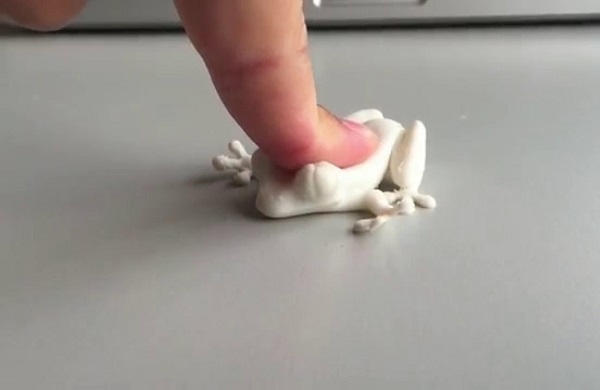 In general, 3D printing using flexible material can prove to be difficult, but the advanced Direct Drive of the Bolt controls the flow of the filament expertly through the nozzle.
In general, 3D printing using flexible material can prove to be difficult, but the advanced Direct Drive of the Bolt controls the flow of the filament expertly through the nozzle.
For prototyping, to be able to develop new products quickly. Today we have many different models of Crocs footwear. This achievement has been by thinking of prototyping in a different way using Leapfrog’s Bolt 3D Printer.
Enthusiasm for the Bolt has started to become recognized outside of Crocs innovation department with our international colleagues. We recommend this machine for prototyping purposes in most professional environments.
Luca Faggin, Europe innovation manager Crocs™
3D printing helps surgeons plan, practice procedures
How 3D printing is used in surgery?
3D printing is having a major impact on medicine in a number of ways. This is mainly evident in Orthopedic Surgery where doctors use 3D printing to help treat patients musculoskeletal system.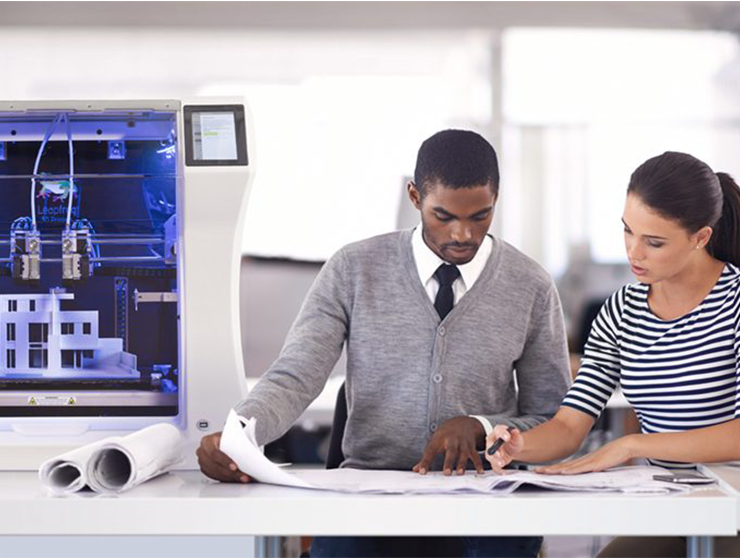 3D scans are taken of patients and using that data, doctors print replica accurate bones of patients.
3D scans are taken of patients and using that data, doctors print replica accurate bones of patients.
What are the models used for?
-
To view injuries more accurately to help plan surgery
-
Tactile feedback for doctors
-
Practice surgical procedures before full operation
-
To review treatment with accurate comparisons between the treatment time period
Dr Rudolph Venter, Division of Orthopaedic Surgery, Stellenbosch University
SEE VIDEO TESTIMONIAL
Trusted by
Professionals
Professionals around the world are using functional 3D printing to drastically improve their product development process in various ways. Most of the global leading companies in engineering, the automobile industry, robotics, architecture, and medical care have integrated 3D printing into their workflows to cut lead times and to bring back control of the process in-house. These range from prototyping parts before mass production, to producing functional parts that can demonstrate how a part will work. To help these companies, Leapfrog 3D Printers designs and produces a range of professional 3D printing solutions that aim to help our customers achieve results faster and produce the highest quality 3D printed parts.
These range from prototyping parts before mass production, to producing functional parts that can demonstrate how a part will work. To help these companies, Leapfrog 3D Printers designs and produces a range of professional 3D printing solutions that aim to help our customers achieve results faster and produce the highest quality 3D printed parts.
Trusted by
Professionals
Professionals around the world are using functional 3D printing to drastically improve their product development process in various ways. Most of the global leading companies in engineering, the automobile industry, robotics, architecture, and medical care have integrated 3D printing into their workflows to cut lead times and to bring back control of the process in-house. These range from prototyping parts before mass production, to producing functional parts that can demonstrate how a part will work. To help these companies, Leapfrog 3D Printers designs and produces a range of professional 3D printing solutions that aim to help our customers achieve results faster and produce the highest quality 3D printed parts.
To help these companies, Leapfrog 3D Printers designs and produces a range of professional 3D printing solutions that aim to help our customers achieve results faster and produce the highest quality 3D printed parts.
What the experts say
Make Magazine: Review on Bolt’s specs and 3D prints
"The Bolt is a powerful device with industrial mechanics and proved to be easy to use in the test. The dual extrusion mode works well, thanks to the enclosed installation space, the heat output of the extruders (up to 360 degrees Celsius) and the construction platform (up to 90 degrees Celsius), the machine is suitable for a wide range of materials"
Review by business.com: Xeed 3D printer
"With a wide choice of materials, very tight precision and a unique dual-extruder design, Leapfrog's Xeed 3D printer is a designer's dream come true." Read more.
3dprintr.com: Reviewing the unique features of Bolt
A few weeks ago, I received the Leapfrog Bolt for intensive testing. Besides a lot of very positive things I have only a few minor points of criticism. What I enjoyed most were the two independent extruders, the air filter and the good print quality when printing with ABS and many other materials.
Besides a lot of very positive things I have only a few minor points of criticism. What I enjoyed most were the two independent extruders, the air filter and the good print quality when printing with ABS and many other materials.
3DPrinting.com: In-depth review on the Bolt
"Definitely one of the best printers we’ve ever tested. The intuitive interface, massive build volume, closed print chamber and independent dual extruders make this printer a true workhorse that will bring your prints to the next level."
Previous Next
TRUSTED BY
Precision, Durability, Consistency
Discover your 3D printer
Xcel
Max print dimensions
550 x 500 x 2240 mm
Bolt Pro
Max print dimensions
300 x 320 x 205 mm
Xeed 2.
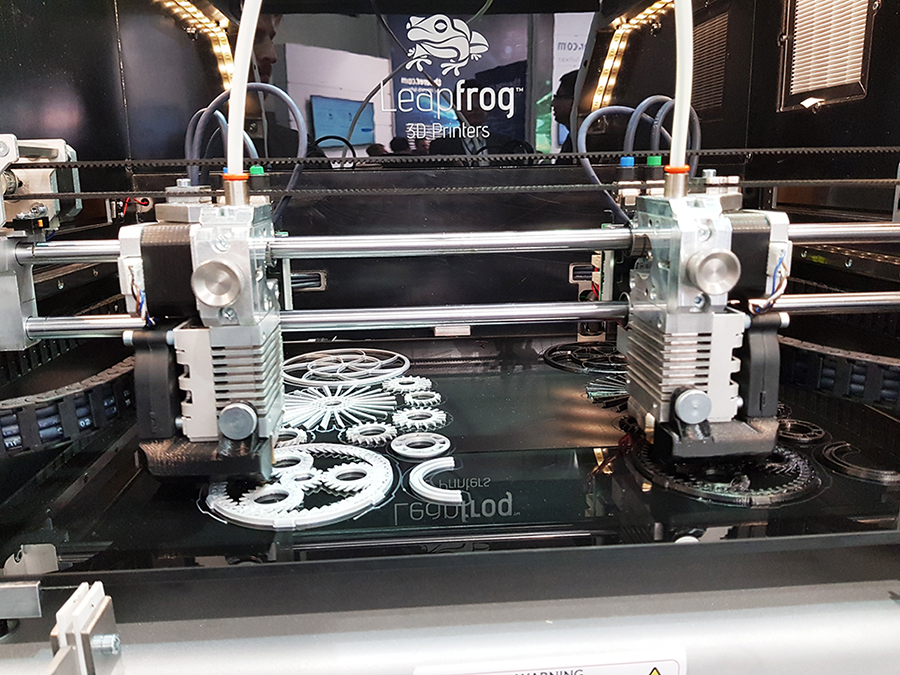 0
0Max print dimensions
280 x 220 x 230 mm
Find
Resellers- Buy your Bolt Pro 3D printer nearby
- The lowest shipping costs
- The quickest delivery
GermanyAustraliaBrazilChinaColombiaCzech RepublicEMEAFinlandFranceGermanyGreeceIndonesiaItalyKorea, Republic OfPhilippinesPortugalRomaniaRussian FederationSaudi ArabiaThailandTurkeyUnited Arab EmiratesUnited KingdomUnited States
Just3D
Germany
Visit websiteBFI 3D
Germany
Visit websiteSEE ALL RESELLERS
Bolt Pro | Professional 3D Printer
Bolt Pro FeaturesBUILT FOR OFFICE AND FACTORY FLOORS
BUILT FOR INDUSTRIAL 3D PRINTING
E3D HOTENDS AND EXTENSIVE FILAMENT OPTIONS
MINIMUM SETUP WITH OUR INTELLIGENT USER INTERFACE
LARGE INDUSTRIAL HEATED BED WITH BUILDTAK FLEXPLATE
INDEPENDENT DUAL EXTRUDER 3D PRINTER
BUILT FOR OFFICE AND FACTORY FLOORS
The large enclosed build volume is equipped with a HEPA carbon filter that filters out 99.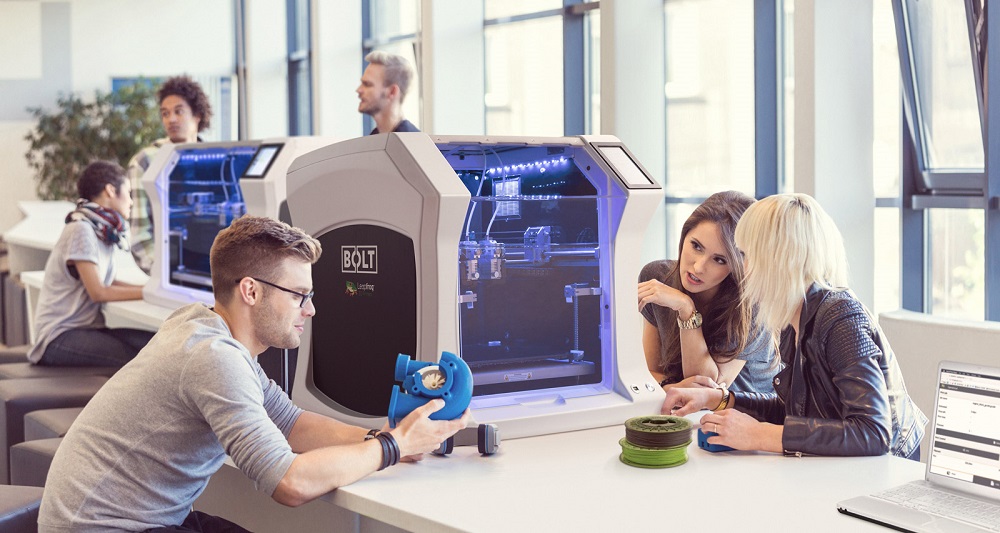 9% of any fumes that are produced when using certain filaments. This makes the Bolt Pro perfect for the office, education and any professional environments.
9% of any fumes that are produced when using certain filaments. This makes the Bolt Pro perfect for the office, education and any professional environments.
BUILT FOR INDUSTRIAL 3D PRINTING
The Bolt Pro has a high-grade aluminium frame which sets it apart from many other printers in the market. The frame gives it great stability when printing ensuring lower printing issues that can arise during demanding projects. In addition to that, all our components are built with precision in mind, using high strength laser cut parts, extensive testing to create a machine that excels in demanding printing scenarios which gives the printer better longevity.
E3D HOTENDS AND EXTENSIVE FILAMENT OPTIONS
Striving to offer our customers the best versatility in their 3D printing needs, the Bolt Pro comes with the best 3D printing hotends in the market. This means the Bolt Pro can print with most major filaments in the market. If users need to produce visual prototypes or functional engineering parts, the Bolt Pro can achieve it easily.
MINIMUM SETUP WITH OUR INTELLIGENT USER INTERFACE
The Bolt Pro has minimum setup requirements that makes it ready out of the box. Operating the Bolt Pro is easy and can be done using the 7” inch touch screen or your preferred personal device using wifi. Any device with network connectivity and a browser can log onto the Bolt Pro and will grant you control as well as visibility through the built-in webcam.
LARGE INDUSTRIAL HEATED BED WITH BUILDTAK FLEXPLATE
The Bolt Pro comes with a heated aluminum bed that is easily removable and it can heat prints up to 90°C. This ensures better heat distribution for hard to print materials that need better layer adhesion. In addition to that, the Bolt Pro includes a Buildtak Flexplate which makes the removal of parts very quick and easy without leading to damaging printed parts due to improper bed adhesion.
INDEPENDENT DUAL EXTRUDER 3D PRINTER
The Bolt Pro 3D printer is equipped with unique direct drive Independent Dual Extruders. This means that both extruders can move independent from each other for clean dual prints. The unique nozzles also give unique benefits like sync- or mirror-mode as well as swappable nozzles for a greater selection of filaments.
This means that both extruders can move independent from each other for clean dual prints. The unique nozzles also give unique benefits like sync- or mirror-mode as well as swappable nozzles for a greater selection of filaments.
The Bolt Pro is a professional 3D printer, designed to offer precise and reliable functional 3D printing results. The Bolt Pro 3D printer can achieve this due to the focus in offering features that give full creative control to our users. These features include a dual extruder system (IDEX) that can print with two materials at once or clone 3D models, which cuts the lead time of a project by half. Additionally, featuring industrial build quality and E3D hot ends makes the Bolt Pro an excellent solution for your 3D printing needs. Designed for organisations, the Bolt Pro can run constantly, print with any 3D printing filament in the market and offers remote management features to ensure projects run effectively at all times. Leapfrog 3D Printers built the Bolt Pro 3D printer to give our users the optimal solution to convert their ideas into functional and tangible products.
- MULTI-MATERIAL PRINTING
- E3D HOTENDS ALLOWS PRINTING WITH MOST MAJOR FILAMENTS IN THE MARKET
- INDUSTRIAL GRADE BUILD FRAME FOR STABILITY
- INTELLIGENT USER INTERFACE WITH EASY WIRELESS CONTROL
- INDEPENDENT DUAL EXTRUSION SYSTEM FOR MIRROR-MODE PRINTING
- HEATED PRINT BED WITH BUILDTAK FLEXPLATE FOR EASY OBJECT REMOVAL
- SLICER SOFTWARE – SIMPLIFY3D
- QUICK START GUIDE
- LEAPFROG 3D PRINTERS USB KEY
Request a Sample
READ REVIEWS
Testimonials
Video Testimonial: FUJITSU aiming high with the Bolt Pro
‘We chose Leapfrog instead of other brands for two reasons. Firstly, because it has an open environment that allowed us to use a variety of materials rather than limiting to just one.
Secondly, because it has certain features that we didn’t find in other machines of its range.’
-
We use the Bolt Pro to create designs that were made with traditional technology like milling.
-
Creating
tooling for the production line. -
3D printing requires fewer parts, the cost is less and its much faster, additionally it has the
flexibility to test multiple concepts without increasing costs to the production lines, which is important. -
The
return on investment has been very fast, in about 6 months. -
We have noticed that our
flexibility and our speed to try new concepts has increased exponentially.
Luis De La Jara, Coordinator Mechanical Designers
Automotive Engineering Department Fujistu Spain
KLM and Leapfrog: a success story
-
We chose the Bolt Pro because of its rigidity and the option to print two parts simultaneously with the two heads.
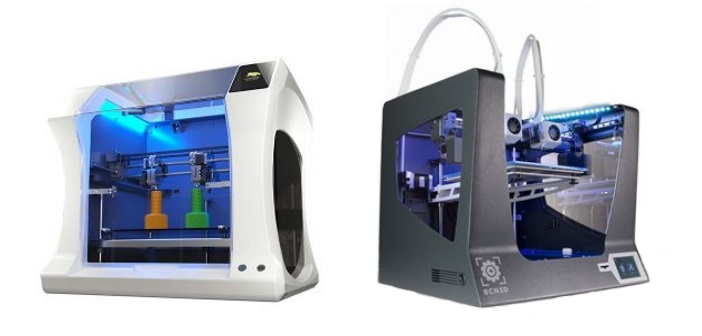 Another advantage is the ability to print high-temperature materials. We have two Bolt Pro printers in our Engineering & Maintenance Department:
Another advantage is the ability to print high-temperature materials. We have two Bolt Pro printers in our Engineering & Maintenance Department: -
We also print prototypes of small aircraft cabin parts. These prototypes are actually tested on board by cabin crew. Final designs are mass produced by injection molding from certified materials.
-
The
dimensional accuracy of the prints is very good.
‘
I certainly recommend the Bolt Pro because of its rigidity, its large print bed and the two print heads which double the print speed once more similar parts are needed. I think the Leapfrog Bolt Pro is very suitable for engineering in prototyping and it can even produce a small series of plastic parts’.
Maarten Ottevanger, Process Engineer
KLM Engineering & Maintenance
Benier: 3DP Food Production
What are we using the Leapfrog 3D Printers for?
At Benier we use the Leapfrog Bolt Pro to make among other items sealing caps, special washers and cover caps.
Why did we choose Leapfrog’s (Bolt Pro) 3D Printer?
Benier produces equipment for the bakery industry. The bolt pro can print with food approved materials which is a great advantage for us. Leapfrog advised us the Bolt Pro 3D printer also because of its large printing volume and its ease of use.
What is your overall experience with Leapfrog’s products and services?
After a demonstration at Leapfrog we received a demo version of the 3D printer to try out for several months. This great service and the right specifications for our products made our choice for Leapfrog and their Bolt Pro 3D printer easy.
Erik van Opstal – Managing Director Benier B.V.
Benier B.V. is a part of the Kaak group
What is Volkswagen using the Leapfrog 3D Printers for?
-
The Bolt was analyzed as the best machine for printing
flexible materials due to the direct drive system -
Relatively
large build volume, especially considering size vs.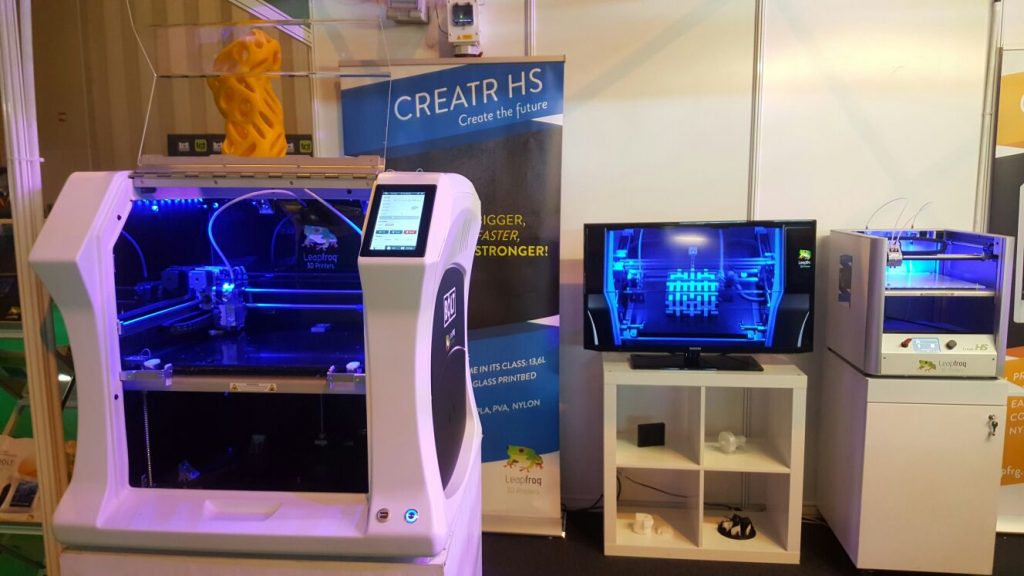 cost
cost -
2 Independent Dual Extruder system
IDEX since we assemble cars for both left and right driving sides, so this helps a lot for building mirror parts - Reliable – although we had our startup issues with this unit, support was good and we managed to correct issues. We believe the Leapfrog Bolt Pro is a very reliable machine for the way we use this equipment.
Summarizing, our engineers using the Leapfrog 3D printers are more than thrilled about the results and potential the Leapfrog printers have; your 3D printers are better from numerous points of view (printing materials, IDEX, build volume etc). At the same time, we also see room for improvements and are happy to share feedback for further development ideas.
Why Rollomatic chose the Bolt Pro to make Humanoid Robots
What are we using the Leapfrog 3D Printers for?
- Serial tool production for Humanoid Robots (grippers, feelers, etc.
 )
) - One-off parts
- Customized prototypes
Would you recommend Leapfrog’s Bolt Pro and to who?
- Absolutely, we would highly recommend the Bolt
- Any company that wants to prototype and produce parts quickly without spending a lot of money on an SLS printer
What would you recommend as changes and added features for the Leapfrog Bolt 3D Printing solution?
- We would recommend looking into achieving a more evenly distributed heat distribution over the build platform
- Automate the bed levelling procedure
- Faster heating of the bed, maybe consider using 230VAC heated element with solid state relay?
- Linear rails for both axis and some guidance on the Z axis to prevent bed wobble.
- Exchangeable nozzle
- Nice to have for the user interface: Possibility to move axis manually, pre-heat button for the bed and extruder.
5 Reasons Why Rolls Royce Chose Leapfrog’s 3D Printers
Rolls Royce was in the market for a new 3D printing solution so as to be able to expand their internal rapid prototyping capabilities. They looked at various machines We looked at a range of machines from cheap Chinese hobbyist machines all the way up to eye-watering expensive liquid polymer based printers but our deciding criteria were:
They looked at various machines We looked at a range of machines from cheap Chinese hobbyist machines all the way up to eye-watering expensive liquid polymer based printers but our deciding criteria were:
- Dual extrusion – soluble support material is very important for the types of models we will be printing, often involving large overhangs and intricate internal features.
- Full enclosure – Two reasons for this, first being to stop the curious/ignorant injuring themselves and the second is to provide an environment conducive to maximising print quality. The only area where the Leapfrog Bolt pro could be better is a heated enclosure but since this appears to be an ABS only issue and we’re getting such good results from PLA then this may not be an issue in the long run.
- Print quality – We had a few samples made up on the Leapfrog bolt and were pleased with the results
- Price – The cost was in the right ballpark to be able to make the business case for the leadership team.

Rez Manzoori – BEng(Hons) CEng MRAeS
Turbine Sub-System Integration
Mackay Hospital: Surgery simulation with Bolt Pro
Why did you choose the Bolt Pro 3D Printer?
- Large print volume allowing us to print large bones.
- High temp hot ends allow us to print with heat stable materials that can be sterilized
- Enclosed with HEPA filter allowed us to safely use in our office.
What are we using the Leapfrog 3D Printers for?
We are able to print fractured bones or bony deformities which gives the surgeons a tactile model to imprint the bony architecture in their memory. This makes surgery much easier and increases the surgeons understanding of the geometry. We can also use the models to trial implants so we know what will work best for fixing fractures.
What is your general impression of 3D Printing and the Leapfrog Bolt?
All surgeons using the models are very happy and see a great perceived benefit. Our prints have for the most part come out very well, and I myself (starting as a complete novice) have found the learning curve manageable and been impressed with how easy it was to get to the point of producing consistently good results.
Our prints have for the most part come out very well, and I myself (starting as a complete novice) have found the learning curve manageable and been impressed with how easy it was to get to the point of producing consistently good results.
Jonathan Davis, Orthopedic Surgeon
Crocs™ – Bolt Pro advantages for design.
-
The Bolt is fitted with a
large build volume. Large enough to create prototypes that can be tested for improvement. -
It also can
print many different types of materials, including flexible plastic. In general, 3D printing using flexible material can prove to be difficult, but the advanced Direct Drive of the Bolt controls the flow of the filament expertly through the nozzle.
For prototyping, to be able to develop new products quickly. Today we have many different models of Crocs footwear. This achievement has been by thinking of prototyping in a different way using Leapfrog’s Bolt 3D Printer.
Enthusiasm for the Bolt has started to become recognized outside of Crocs innovation department with our international colleagues. We recommend this machine for prototyping purposes in most professional environments.
Luca Faggin, Europe innovation manager Crocs™
3D printing helps surgeons plan, practice procedures
How 3D printing is used in surgery?
3D printing is having a major impact on medicine in a number of ways. This is mainly evident in Orthopedic Surgery where doctors use 3D printing to help treat patients musculoskeletal system. 3D scans are taken of patients and using that data, doctors print replica accurate bones of patients.
What are the models used for?
-
To view injuries more accurately to help plan surgery
-
Tactile feedback for doctors
-
Practice surgical procedures before full operation
-
To review treatment with accurate comparisons between the treatment time period
Dr Rudolph Venter, Division of Orthopaedic Surgery, Stellenbosch University
Specifications
Every little detail, yes, really everything
Precision
size
Speed
50 - 350
Layer height (micron)
64
Weight (kg)
100
Printing speed (mm/s)
DW/H: 8/10
Positioning precision (micron)
Aluminium
Body framework
6
Max. Flow Rate (mm3/s)
Flow Rate (mm3/s)
0.4
Nozzle diameter (mm)
723 x 831 x 801
Printer dxwxh (mm)
250
Travel speed (mm/s)
Precision
2
Number Extruders
Buildtak Flexplate System
Printbed
330 x 320 x 205
Single Extruder Build Volume (mm)
90°C
Print Bed Temperature
270/360°C
Nozzle Temperature
300 x 320 x 205
Dual Extruder Build Volume (mm)
Choose the right material for
Bolt proHIPS
Scaffold
PP
Carbon
Hybrid
Nylon
Flex
PETG
E-PLA
ABS
HIPS
HIPS is a filament that is used to both print objects and acts as support material during the construction of complex geometric objects with angles greater than 45 degrees. Acting as a support material, HIPS is easily removed when the completed object is submerged in D’Limonene where HIPS is soluble. The best material to pair HIPS with as support is ABS since they both have very similar mechanical properties. If used as a standard material, HIPS objects are very stiff and have good heat resistance.
Acting as a support material, HIPS is easily removed when the completed object is submerged in D’Limonene where HIPS is soluble. The best material to pair HIPS with as support is ABS since they both have very similar mechanical properties. If used as a standard material, HIPS objects are very stiff and have good heat resistance.
Printing tips
Heated Bed: Temperature affects HIPS when printing and you need to ensure better management for better printing results.
Scaffold
Scaffold Soluble Support Filament is used to print complex geometric parts. Objects that have angles greater than 45 degrees or overhangs require another material to keep the shape uniform, especially during the printing and cooling process.
Printing tips
Storage: Scaffold being soluble in water means it is highly hygroscopic and should be stored in a dry environment.
PP
PP (Polypropylene) is a light flexible material that offers a number of highly desired properties. It has high impact strength and bending abilities making it great for parts that require heavy use. In the consumer market, it is used for applications, such as packaging, stationary and more.
It has high impact strength and bending abilities making it great for parts that require heavy use. In the consumer market, it is used for applications, such as packaging, stationary and more.
Temperature: Printing with Polypropylene requires planning and careful temperature management to ensure successful prints. It is a material that is not as forgiving as E-PLA during the printing process.
Storage: Store the filament in dry areas since it absorbs moisture.
Carbon
Carbon filament is great for printing strong and durable parts. It is the perfect choice for mechanical parts, housing, shells or other protective casings. Carbon filament usually contains additional printing materials within its composition (ABS, PETG, NYLON etc.) depending on the product needed.
Printing tipsSteel Nozzles: Carbon filament is very abrasive and it is better to print with steel nozzles to reduce clogging.
Print Speed: To ensure better results, print carbon parts with a lower printing speed. This will ensure better results.
Hybrid
Leapfrog Hybrid (CPE) is a strong material that is easy to print with and has various properties that make it an ideal material for large objects or objects that are used for mechanical prototypes. In terms of durability, it is between ABS and PLA and produces objects that can withstand high temperatures.
Printing tipsTemperature: Printing with Hybrid requires correct print bed temperature settings and managment.
Nylon
Nylon is a well known and very tough filament that has a wide array of applications. It’ is slightly flexible giving it the ability to bend without breaking and has durability properties such as heat resistance and impact resistance. Compared to other materials, it is the most versatile due.
Printing tipsStorage: Nylon filament like some other filaments can absorb moisture from the air and can lead to printing issues.
Flex
Flex is a filament that uses a combination of plastic and rubber. The main benefit of Flex filament is the creation of flexible prints with elastic properties. When printing with Flex, the amount of infill can control the stiffness of your print. Flex printed with 100% infill will be quite rigid, whereas a 0% infill would create a rubber tube or even balloon-like print.
Flex can be used for rubber wheels, mechanical grips or tough durable parts with superb shock absorption using 100% infill.
Print Speed: Use consistent flow rates and also smaller layer heights to ensure better interlayer adhesion.
Storage: Keep flexible filament dry and away from moisture.
PETG
Polyethylene Terephthalate is the most widely used plastic globally and is used to create various products like standard water bottles. PETG on the other hand is specifically designed for 3D printing applications and is considered the bridge in terms of mechanical properties between PLA and ABS. It offers strength, impact resistance and chemical resistance without having issues like warping.
It offers strength, impact resistance and chemical resistance without having issues like warping.
Having similar properties to PLA and ABS, PETG is a great filament for a number of applications that require more durability than PLA can offer, while being easier to print with than ABS.
Printing tipsPrint Speed: We recommend printing with lower than average print speed if the desire is to achieve better strength properties due to better layer adhesion.
Storage: Store the filament in dry areas since it absorbs moisture.
E-PLA
Leapfrog Engineering PLA (Polylactic Acid)is a biodegradable plastic that was formulated to provide greater durability than standard PLA without compromising on its eases of use when printing. PLA is the most popular filament used globally, offering great print quality with good dimensional accuracy and is used in many applications.
E-PLA is used in various settings mainly due to its ease of use compared to other filaments. It is the best filament to begin with for novice 3D printing users.
It is the best filament to begin with for novice 3D printing users.
Sunlight: Direct sunlight over long periods can degrade the quality of the printed object so store E-PLA parts inside.
Storage: Store the filament in dry areas since it absorbs moisture.
ABS
ABS (Acrylonitrile Butadiene Styrene) is a strong popular filament that is used widely for 3D printing parts. It has strong material properties which produce parts with high impact, high-temperature resistance. Having these qualities however does make it a little harder to print with than some other filaments, but our printers come with a heated bed that ensures the filament is constantly heated to ensure prints adhere to the bed and print to specifications.
Printing tipsTemperature: ABS is very sensitive to temperature fluctuations during the printing process. It often cracks or warps as different layers cool differently. To ensure this issue is mitigated, our printers come with an enclosure system and heated bed to produce better results.
It often cracks or warps as different layers cool differently. To ensure this issue is mitigated, our printers come with an enclosure system and heated bed to produce better results.
Sunlight: Direct sunlight over long periods can degrade the quality of the printed object so store ABS parts away from UV sources.
Plastic feeding problem from X-layer
Colleagues, I need your advice / experience / thoughts.
Situation: there is a self-assembly printer a la Ultimaker 2, slicing in Cura, printing through Pronterface on a string, in the brains of Arduino Marlin. ABS plastic from FD Plast.
With test extrusion and retraction through Pronterface - everything works. I printed several parts with 100% content - they printed perfectly (total time for successful printing ~ 24 hours). Now I decided to print the details with 50-80% infill - the result is below. nine0003
i. e. The first X-layers were printed normally, then some nonsense began with the supply of plastic. This is the final print of the figure in full. There is a ball of plastic on the nozzle, but not smeared and in volume it does not at all correspond to what would be required for the remaining print (the volume of the ball is less - that is, it did not add pressure). The tangle is like squeezing plastic in small doses on a hanging nozzle - the goats twist and stick. Retract was disabled when printing this turtle. The print settings have not changed since the previous successful print (except for padding). nine0003
e. The first X-layers were printed normally, then some nonsense began with the supply of plastic. This is the final print of the figure in full. There is a ball of plastic on the nozzle, but not smeared and in volume it does not at all correspond to what would be required for the remaining print (the volume of the ball is less - that is, it did not add pressure). The tangle is like squeezing plastic in small doses on a hanging nozzle - the goats twist and stick. Retract was disabled when printing this turtle. The print settings have not changed since the previous successful print (except for padding). nine0003
A similar (with some variations) situation occurred during the first test print after the printer was assembled:
test print with 50% coverage. Either the plastic didn’t climb (at all), then at first it climbs normally, then (when printing starts without brim) such a leapfrog begins. And the walls are the same (with holes). That first time (1) checked the drivers (A4988) - found a snot of solder from one of the legs on the capacitor (!) removed - the same, (2) swapped the driver with Z - the same, (3) removed and replaced engine (the clutch sat firmly, did not slip) - hooray, printing went fine! And he began to print normally those same 24 hours. nine0003
nine0003
Then I put it on night printing - the locking sleeve of the universal filament holder. Such a big cone. I set the filling to 70%, with zero retract (there is a checkbox, but the distance is zero). In the morning I come - the first 3 layers are printed (I set such a thickness of the wall base), and then a layer of some fine sand. After that it is empty (but according to Prontera - the part was printed). Nothing hangs from the hotend. I dismantled the nozzle - yellowed plastic inside (printed in natural (white) color). I cleaned the nozzle, removed the extruder - the feed gear turns. I fixed the gear, checked the bar - it was not gnawed. I start printing again - on the first layer it is clear that the plastic is not topped up. The second layer - again the plastic does not choke - again I cleaned the nozzle, checked the engine - everything should work, but nothing! I changed the plastic to a proven black one, put a small print (turtle) - the result is in the photo above. The first 3 layers are more or less, then again there are problems with the supply of plastic . .. . nine0003
.. . nine0003
Possible causes of problems:
1) Again (?!) the driver burned out (standard settings, according to Plastmask;))?
2) Has the engine burned out again (?!)?
3) Problems with Arduino itself?
4) Problems due to printing on a string (although the laptop rebooted after unsuccessful attempts, and even before that it printed normally)?
5) Problems with slicing in Kure and printing through Prontera when not 100% infill? In Kure, by the way, the retract is zero, and Pronter pulls the bar...
What is your experience? Has anyone come across this situation, how did you solve it? How can it be solved at all?
Engines, by the way, are barely warm after 5 hours of typing. Drivers under the air. Power supply 300 W.
Best Files for 3D Printers Rook・Cults
modern chess set
1,50 €
Wall chess set "Unorthodox"
€2. -50% 1.25 € 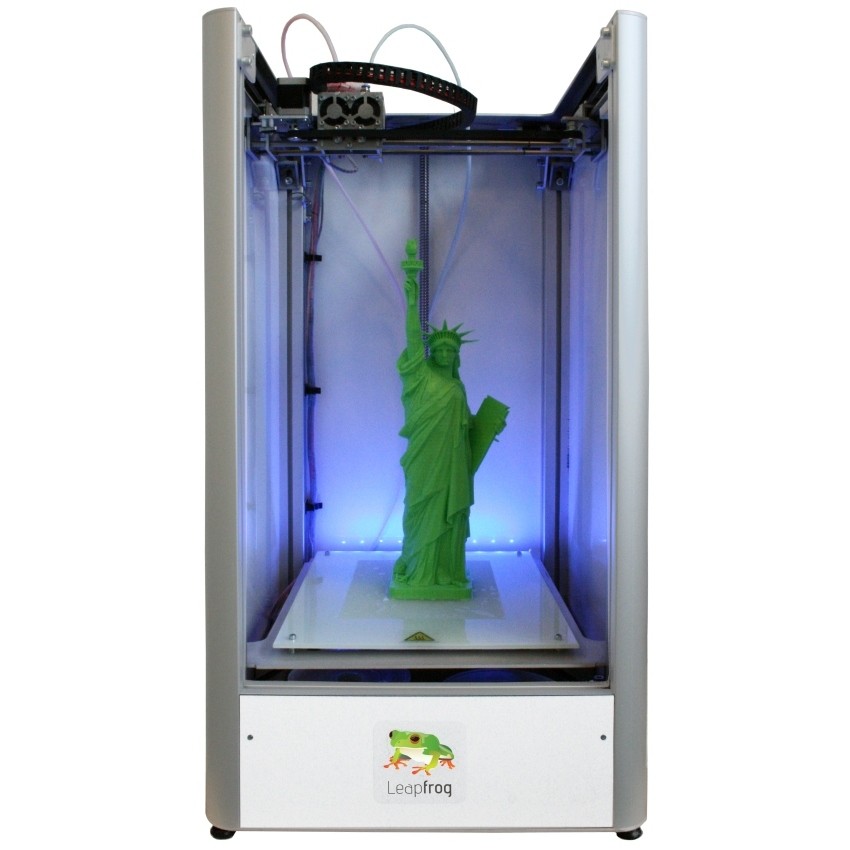 50
50
Unorthodox chess set
2.50 €
Chess Rook Vintage USSR
Free
Chess Set Minimal Design
Free
nine0034 CHESS SET / SET DE AJEDREZ2 €
Rock keychain // Rock keychain // Tower keychain
0.75 €
Chess piece, boat of a spiral staircase
Free of charge
Chess cookie cutter set
1.71 €
Chess set
Free
Besuzzi Chess Set N°3
Free
classic chess set
€1. -50% 0.71 €  41
41
Medieval Chess (STL)
6.59 €
Crusaders Chess (STL)
€6.59
Converted rook from the full Egyptian chess set by runsys
Free
Knuk
Free
Highfleet boat alternative
Free
Ben 10 ceremonial dress 3D figurine model
5.94 €
nine0034 3D Print Optimized Geometric Chess SetFree
Kasparov chess computer spare castle / rook (SciSys / SaiTek)
Free
Minimalist sloop
5 €
Space Chess - Spaceship - Rook
4.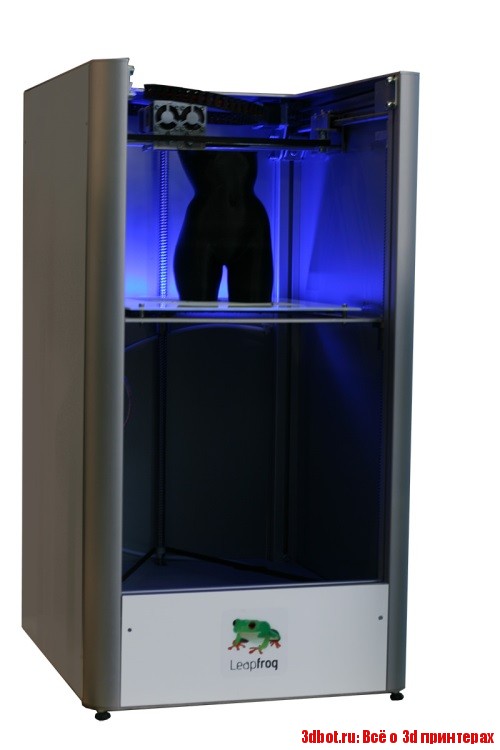 72 €
72 €
4.72 €
Halloween Chess Frankenstein Rook
Free
Halloween Chess - Frankenstein
4.72 €
Rabbit Chess Rook
1.78 €
Rabbit Chess Pawn
1.78 €
nine0034 Rabbit Chess Elephant1.78 €
Rabbit Chess Queen
1.78 €
Copy "Brilliant Esbu"
Free
Obese Rook
Free
Chess set "Rabbit"
9,24 €
nine0034 Christmas Chess - Chimney 4.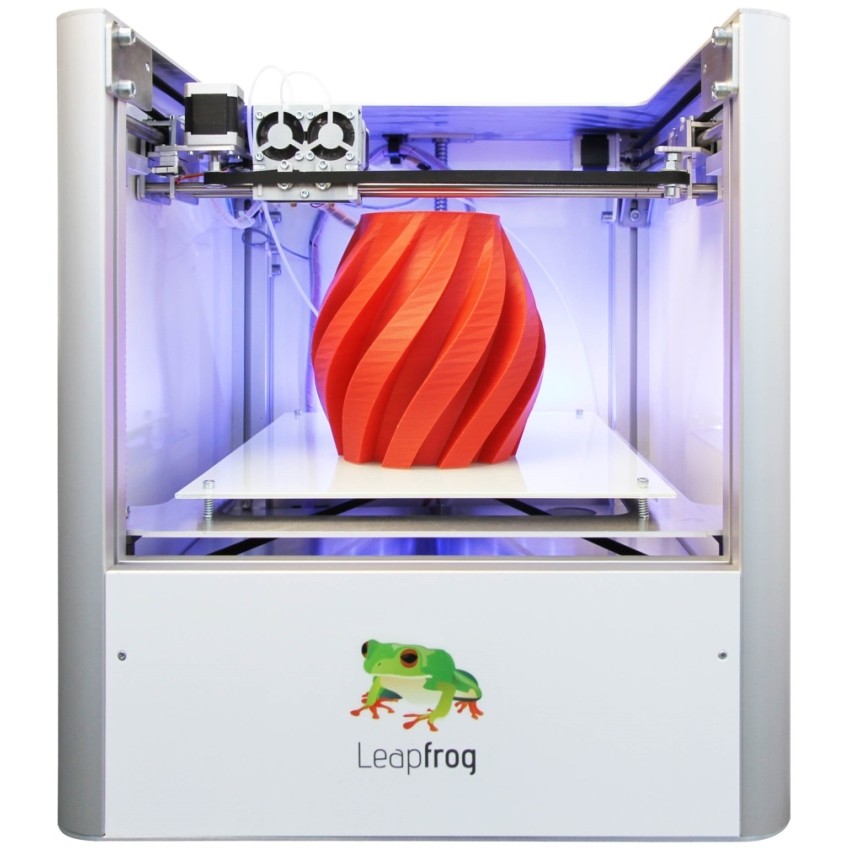 72 €
72 €
Keychain "Cow Lola"
2.11 €
Bella Cranel Armor and Leggings - Cosplay
18.86 €
Staunton Chess Pieces
Free
Chessboard low poly 3D model
0.57 €
Mayan Chess
3.89 €
Women's chess
3.89 €
Chess lamp
3 €
Text flip - chess set
5 €
Boat (with resin relief)
Free
steampunk fantasy chess case
4 €
steampunk fantasy chess pieces
8 €
HARRY POTTER WIZARD'S CHESS SET COMPLETE
1,79 €
Rook_gun.






